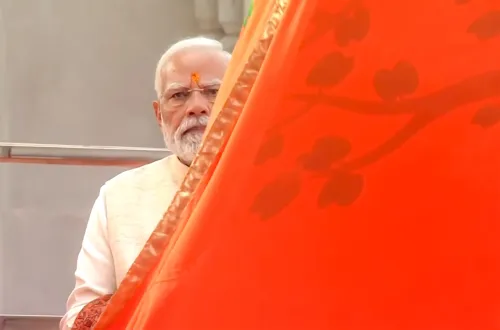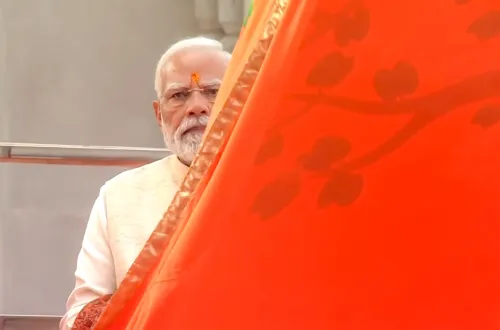Will India’s Space Economy Reach $44 Billion by 2033?

Synopsis
Key Takeaways
- India's space economy is projected to reach $44 billion by 2033.
- Significant growth is attributed to private sector participation and policy reforms.
- Satellites are essential for enhancing financial inclusion in rural areas.
- India's space missions are gaining international recognition.
- Chandrayaan-3 exemplifies India's commitment to space exploration.
New Delhi, Oct 8 (NationPress) The space economy of India is poised to grow nearly fivefold within the next decade, potentially reaching around $44 billion by the year 2033, as stated by Union Minister of State for Science and Technology, Dr. Jitendra Singh, on Wednesday.
The minister highlighted that this remarkable growth can be attributed to policy reforms and an increase in private sector involvement, as mentioned in an official statement.
Dr. Singh pointed out that satellite communication will act as the cornerstone of India's digital infrastructure, playing a crucial role in connecting remote areas where terrestrial networks struggle due to geographical challenges. With over 70 percent of new ATM installations occurring in rural regions, he asserted that satellite communications will be essential for promoting financial inclusion and broadening digital services.
Initiatives like SVAMITVA have already granted land ownership rights to more than 2.4 crore rural property owners across 1.61 lakh villages through satellite mapping, according to the minister. Satellites have become indispensable for disaster management, daily monitoring of forest fires, and assessments of agricultural output, as well as powering major schemes like Gati Shakti for infrastructure planning and NavIC for navigation.
The minister also noted that India’s space diplomacy is gaining strength through missions such as the forthcoming Chandrayaan-5, in collaboration with Japan, and the NASA-ISRO Synthetic Aperture Radar (NISAR) mission. Neighboring countries are increasingly relying on Indian satellites for disaster management and communication support, he added.
“Seventy percent of our space technology is devoted to development and improving living standards, not merely to rocket launches,” Dr. Singh stated.
He further remarked that India’s cost-efficient missions, expanding collaborations with private entities, and ambitious space agenda are elevating the country’s status as a global leader.
The historic soft landing of Chandrayaan-3 near the Moon’s south pole in 2023 has brought India international acclaim, including the World Space Award, at about half the expense of comparable global missions. On the commercial front, India has successfully launched 433 foreign satellites, yielding over $190 million and 270 million euros in revenue, with plans to establish its own Bharatiya Antariksh Station by 2035.









